Greubel Forsey
A Closer Look at the Greubel Forsey Grande Sonnerie
So much so that the number of watchmakers — as individuals or as brands — capable of building a grande sonnerie on their own, can still be counted on two hands since Philippe Dufour presented the first Grande Sonnerie wristwatch in 1992. The list includes Jaeger-LeCoultre, Patek Philippe, Audemars Piguet, Franck Muller and F.P. Journe.
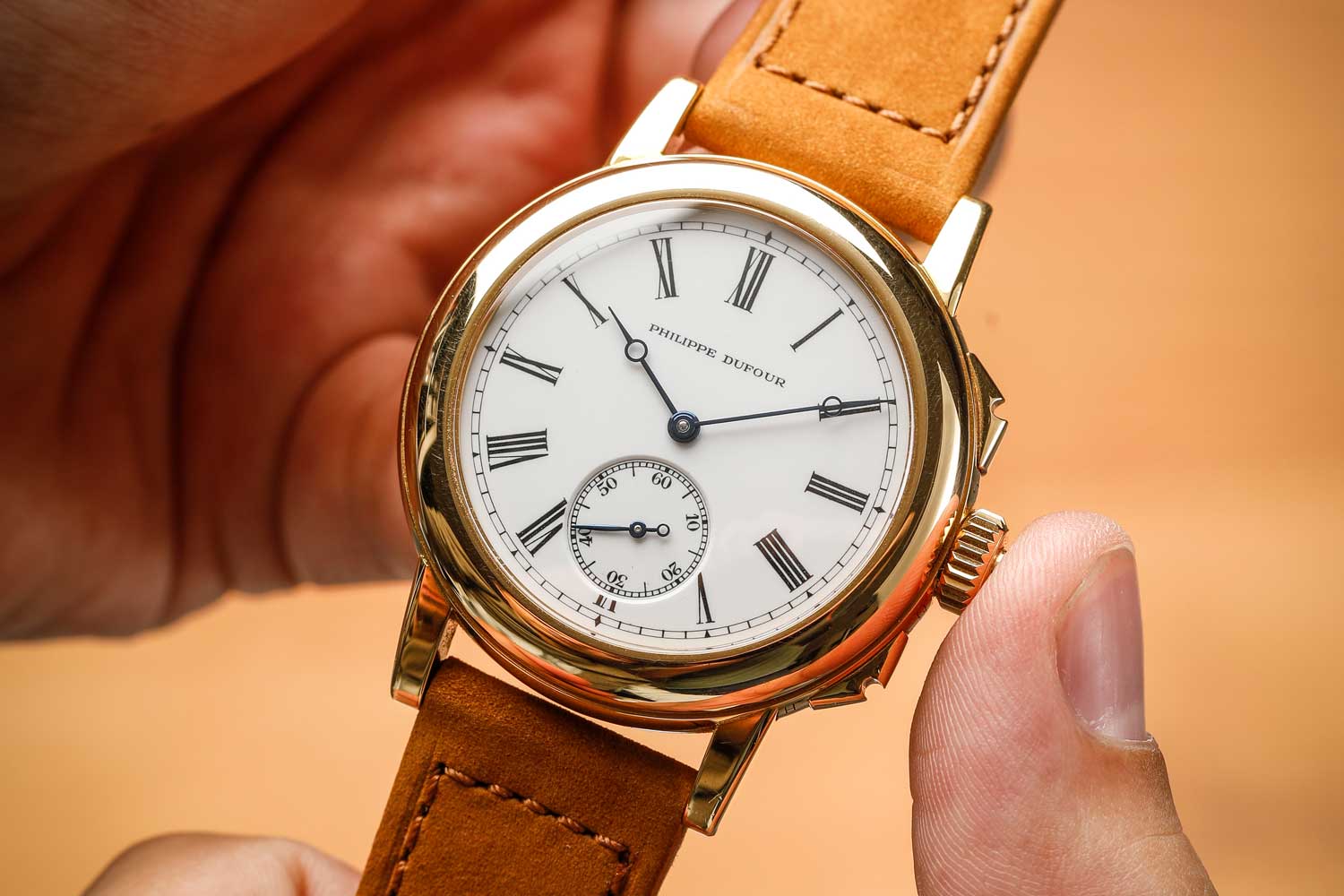
Grande & Petite Sonnerie Wristwatch Number 1 in Yellow Gold
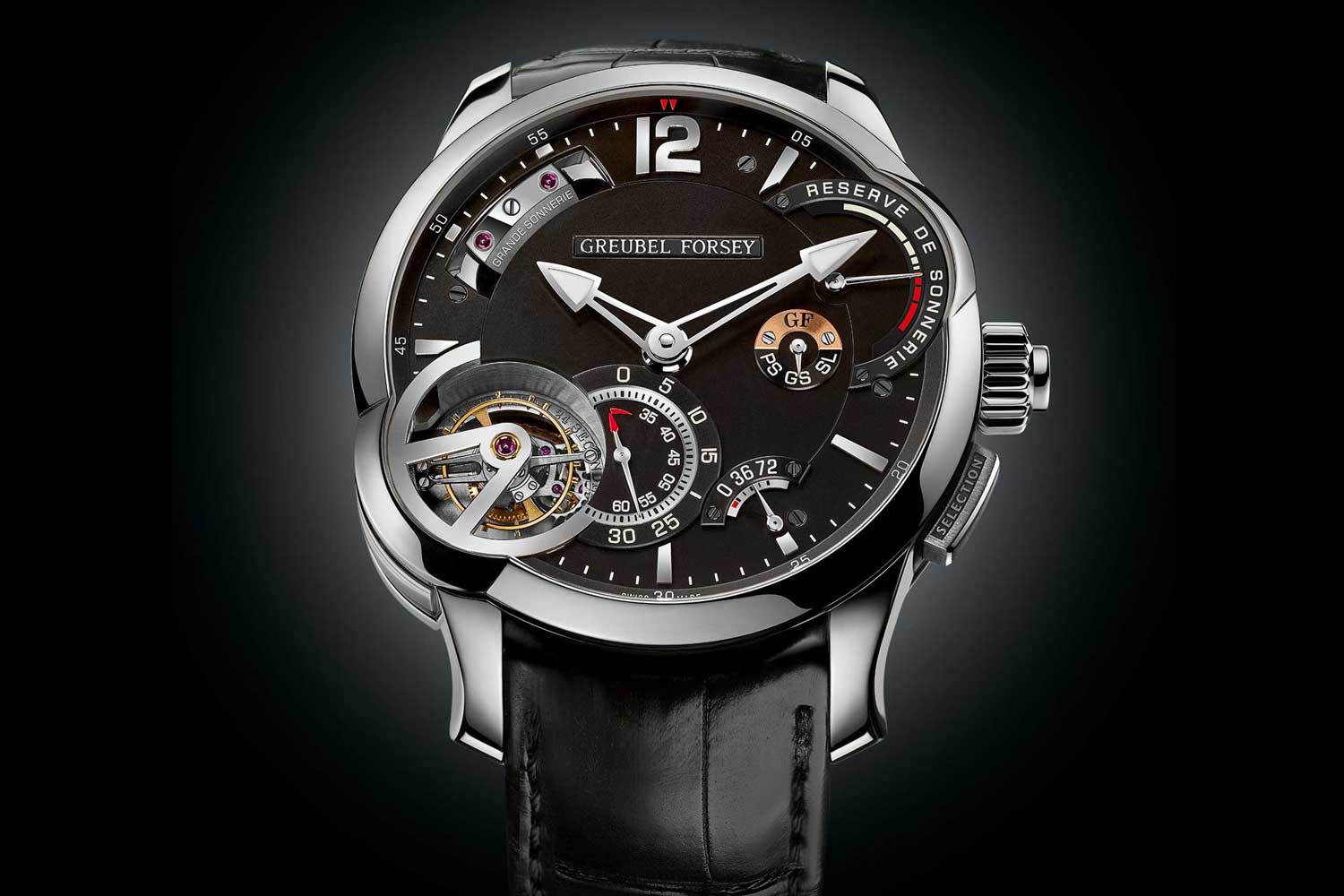
Grande Sonnerie with a 24-seconds
Chiming In
A grande sonnerie is sometimes referred to as a clockwatch because, as with a mantel clock, it chimes the time — the hours and quarters — in passing or, in other words, automatically without having to be activated by the wearer. Because of its regular chiming, it demands a great deal of energy, hence necessitating a dedicated mainspring barrel. Almost invariably, the strike train in such watches can be set to either one of three modes: grande sonnerie; petit sonnerie, which only strikes the hours in passing; or silence.
In contrast, a minute repeater only chimes the time — hours, quarters and minutes — on demand. As such, the tension required to sound the gongs each time is not nearly as great as that for a grande sonnerie, so all it typically requires is a small secondary spring that is charged when a spring-loaded slider is pulled, or a pusher is depressed. Once released, energy is then discharged to power the strike train. By design, grande sonnerie wristwatches are often also minute repeaters, enabling time to be struck on demand as well as in passing.
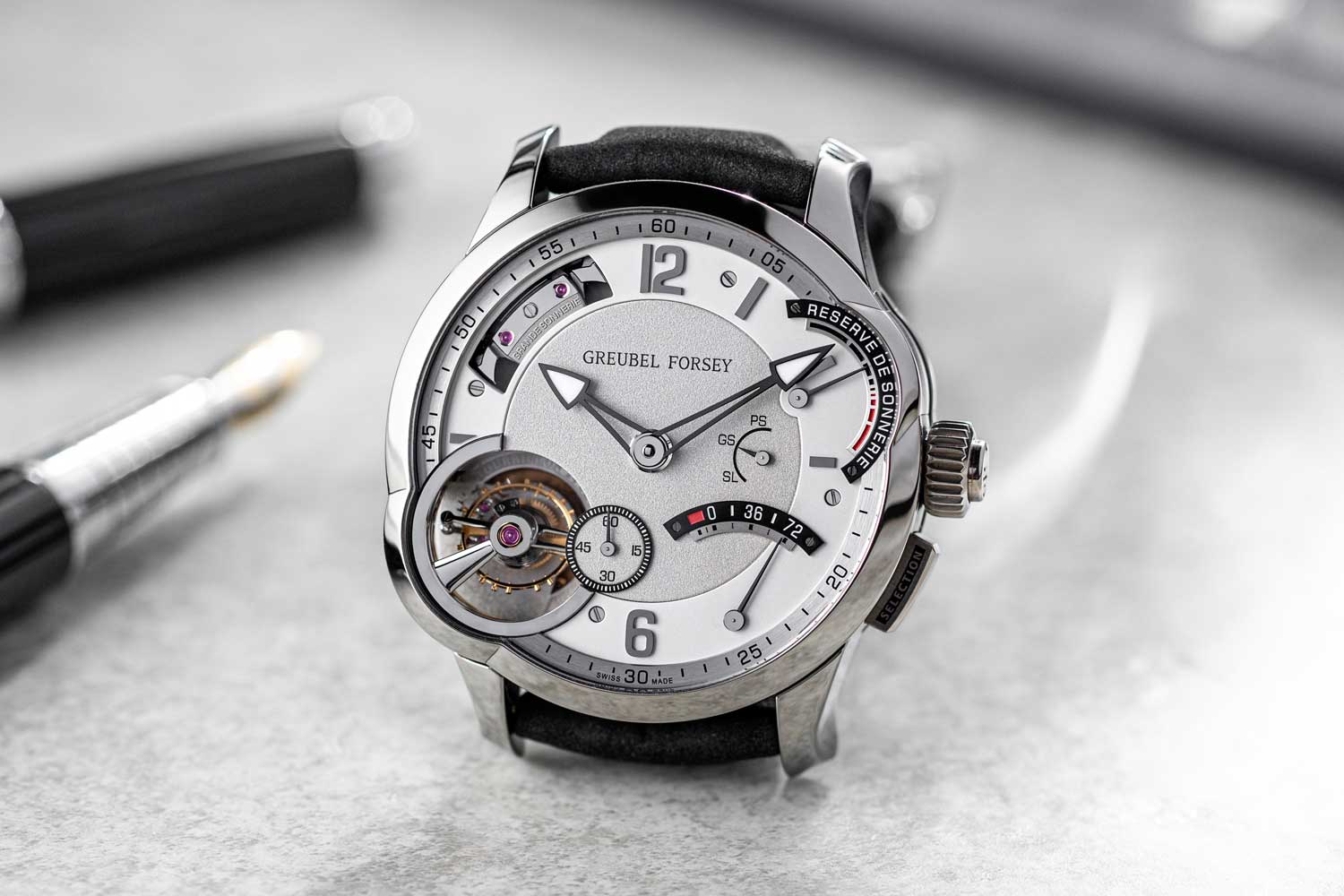
Greubel Forsey Grande Sonnerie (Image: Revolution©)
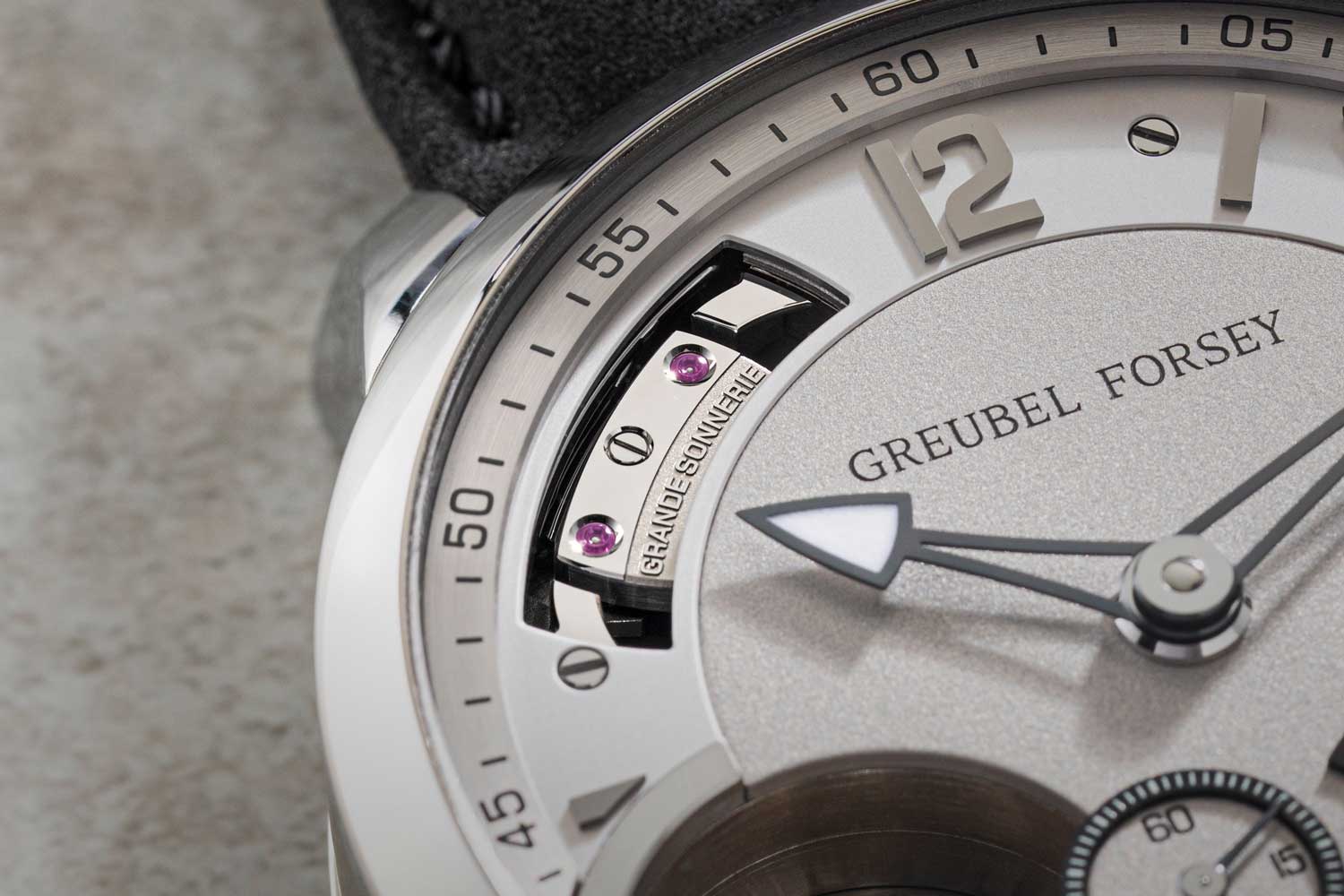
Visible of the hammers and gongs of the chiming mechanism (Image: Revolution©)
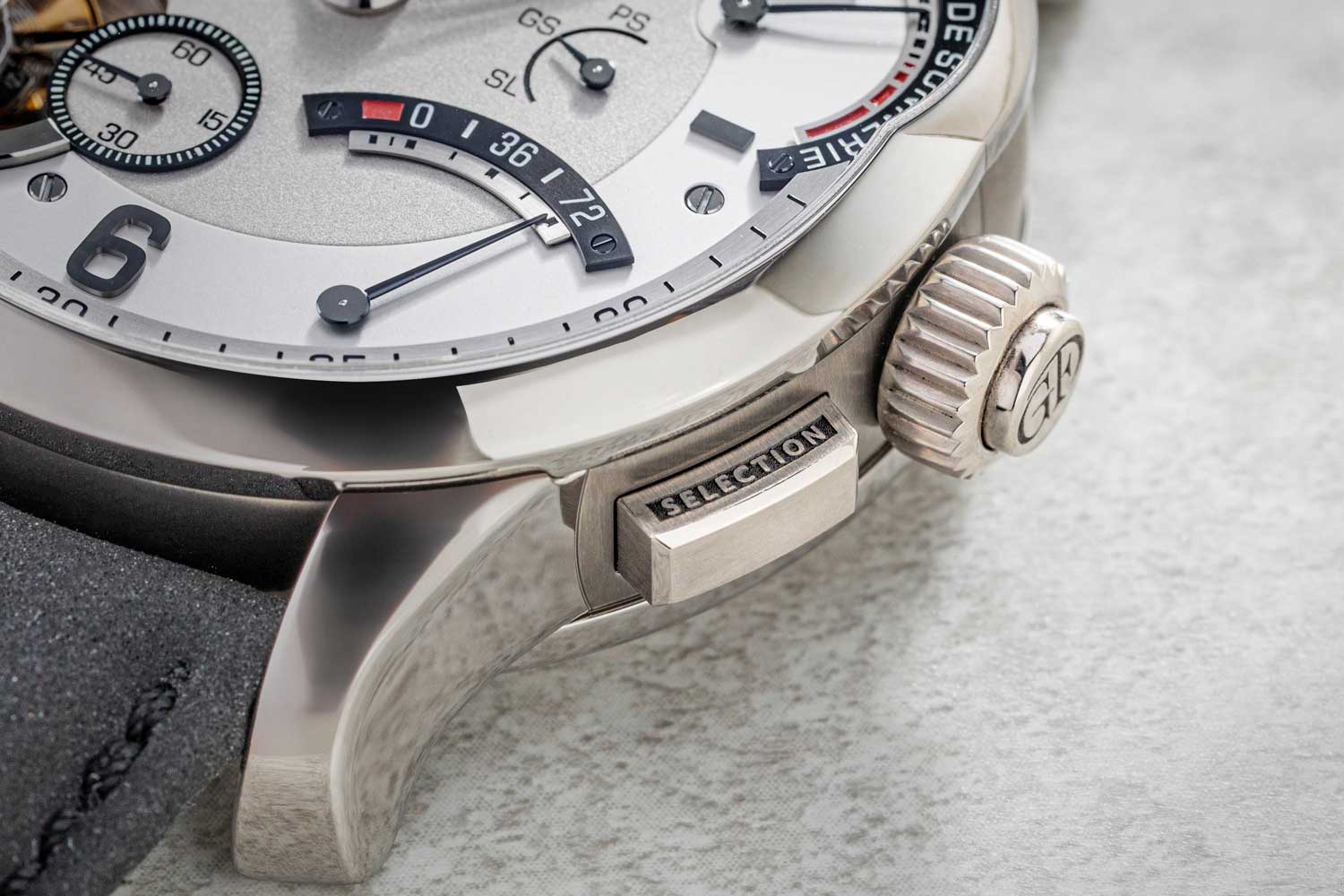
The selector pusher (Image: Revolution©)
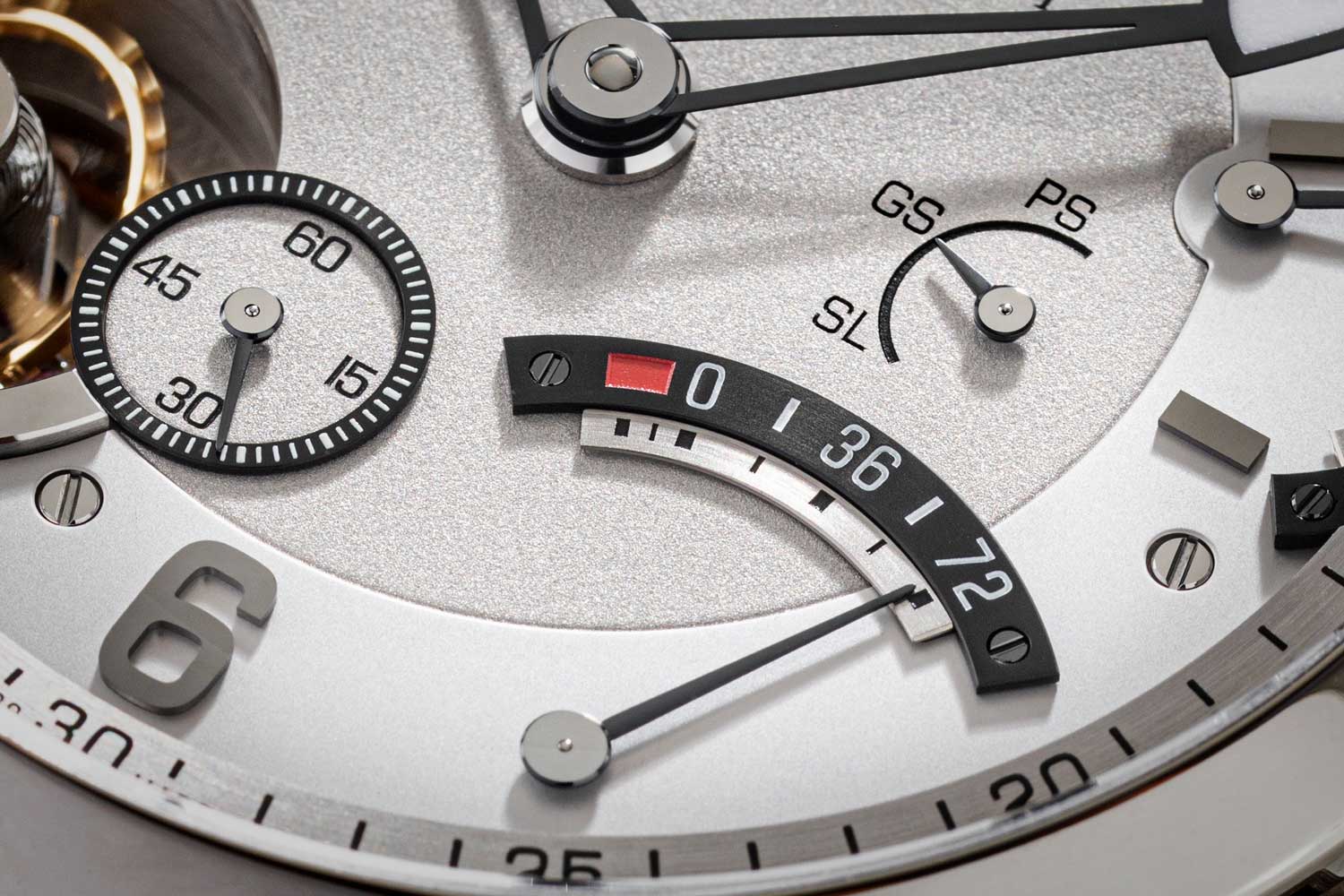
72-hour power-reserve indicator (Image: Revolution©)
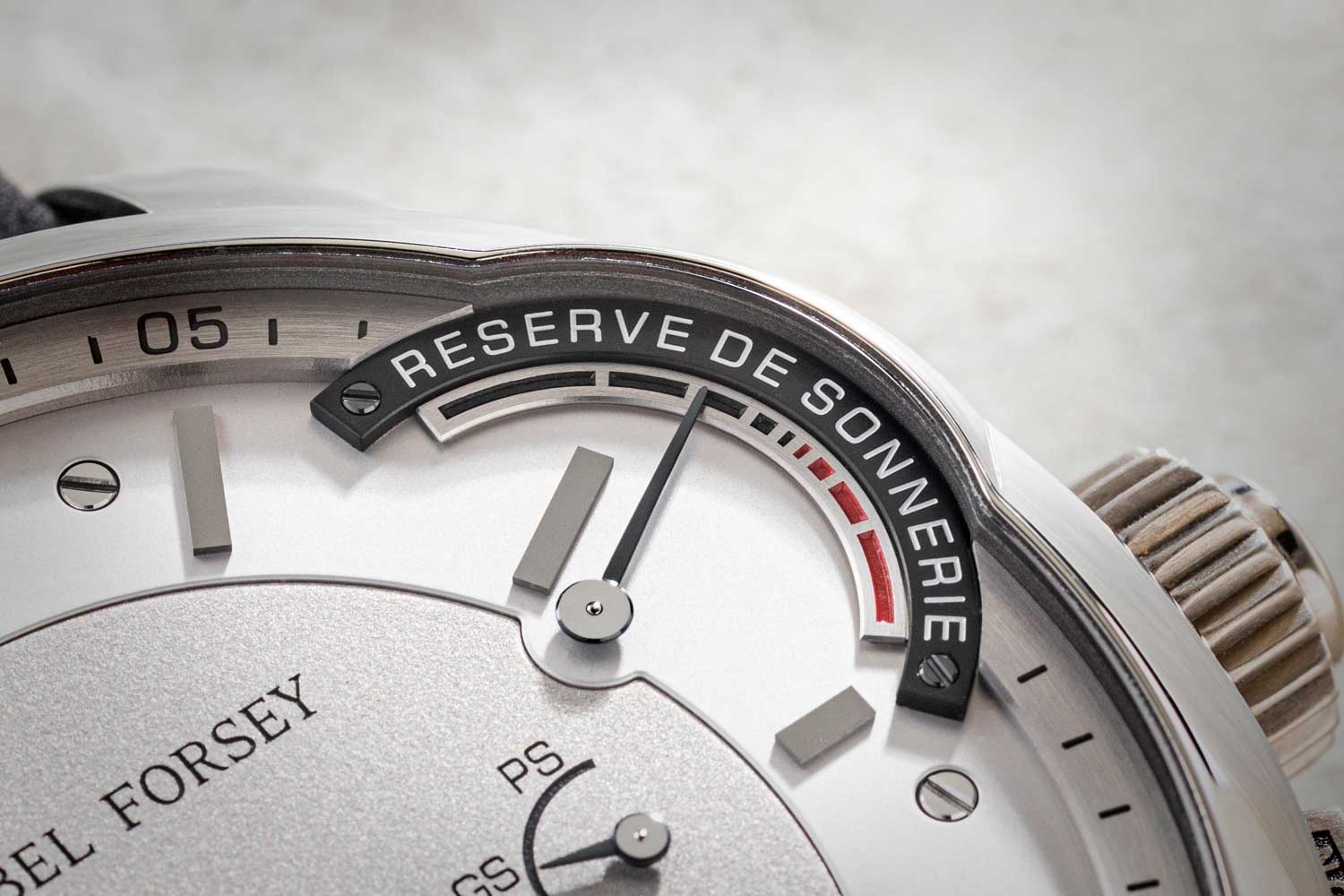
Sonnerie Mode (Image: Revolution©)
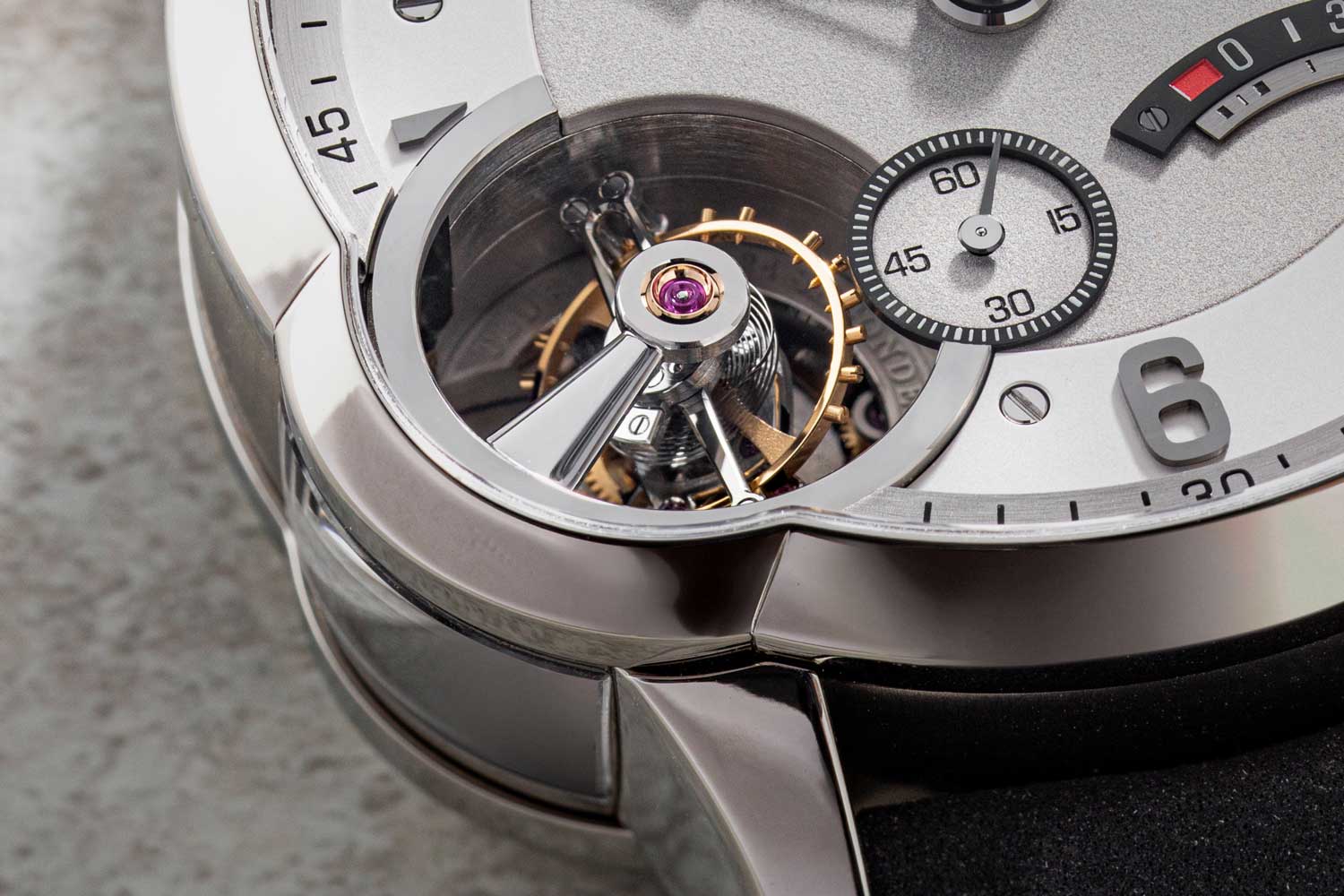
The fast-rotating, 25° inclined tourbillon (Image: Revolution©)
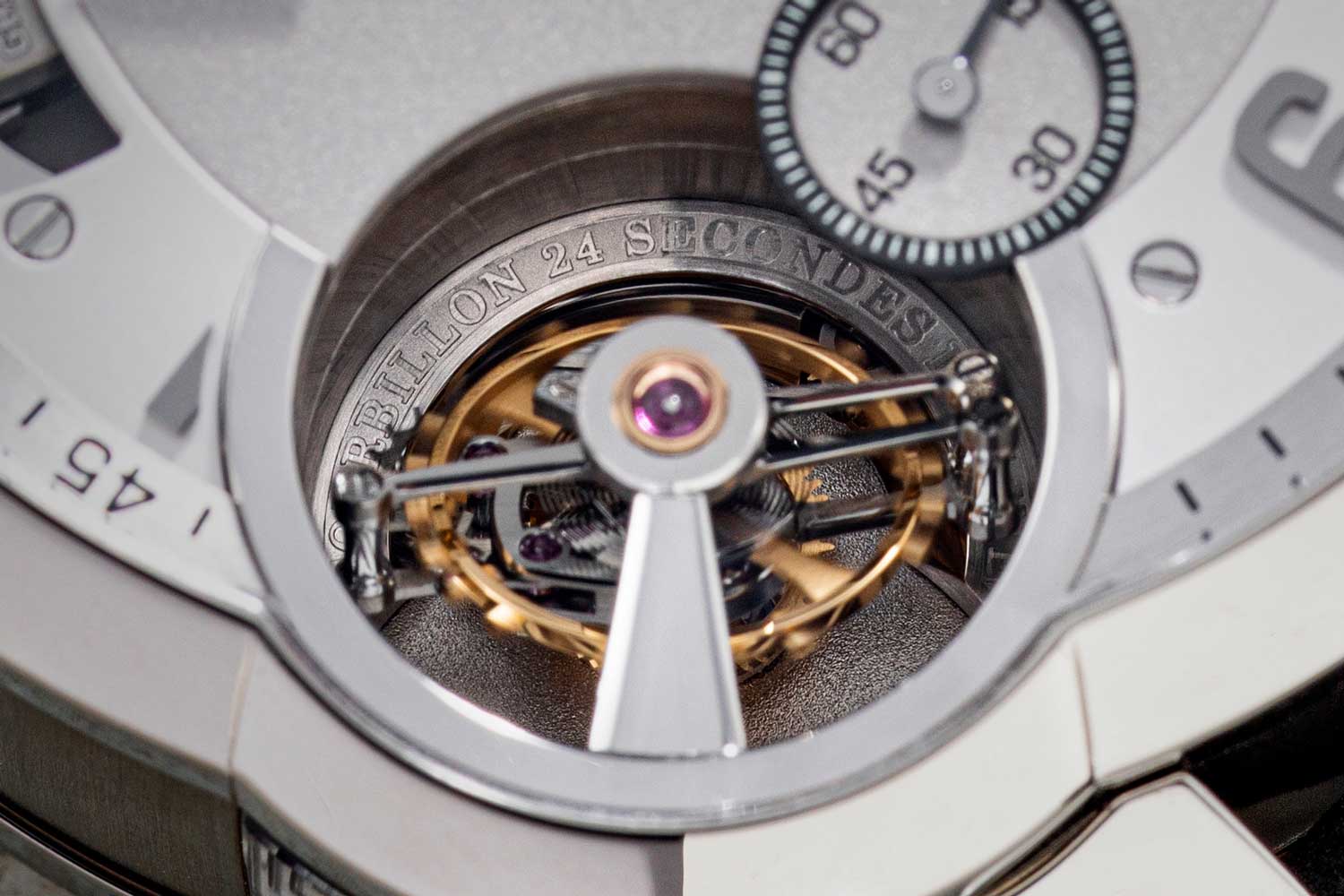
The fast-rotating, 25° inclined tourbillon (Image: Revolution©)
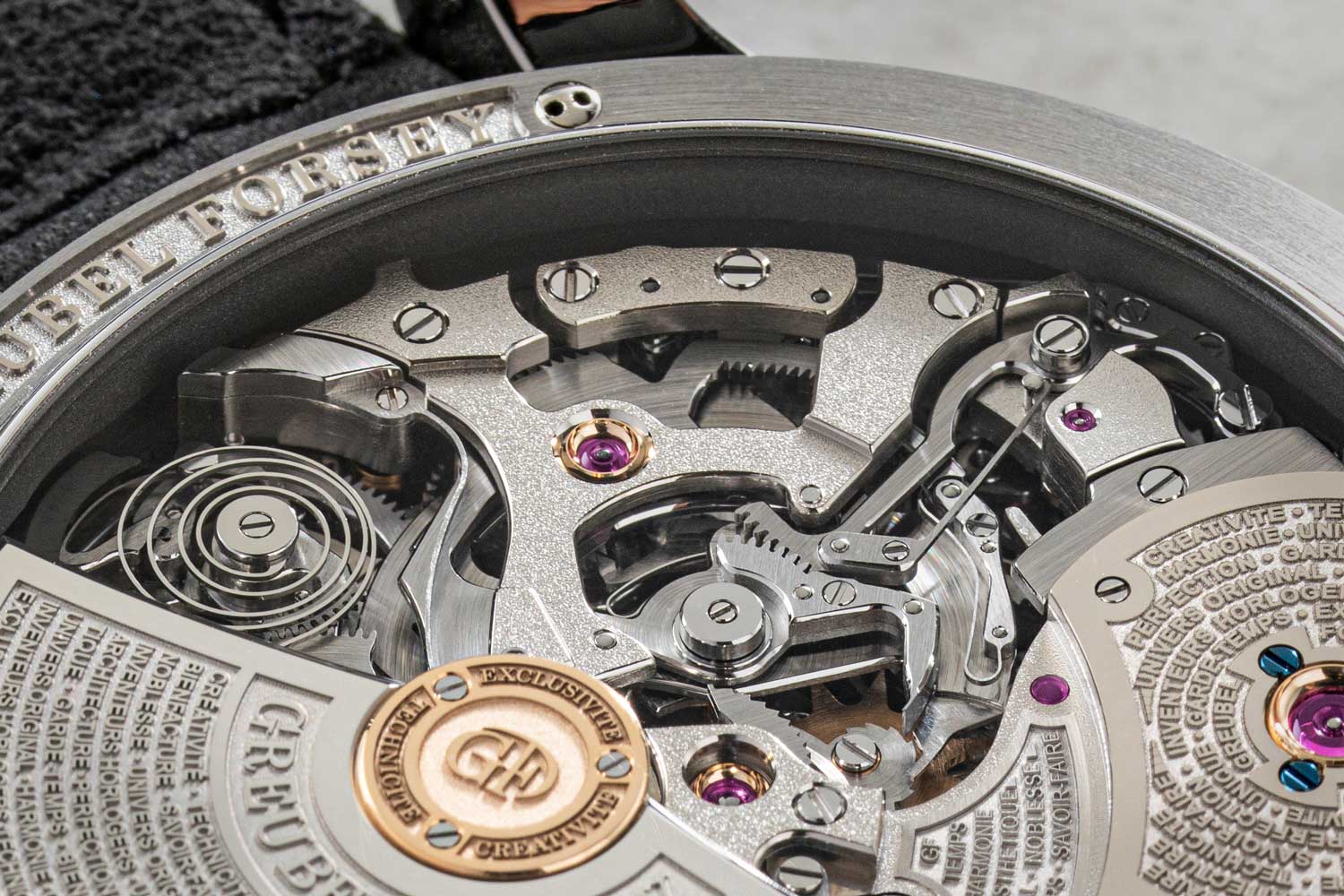
Greubel Forsey Grande Sonnerie (Image: Revolution©)
Also visible on the reverse is a pair of cams pivotably mounted on the central axis of the movement — a quarter snail with four steps and minute snail with four arms, each with 15 steps — that are responsible for translating the movement of the hands to sound. As the center wheel rotates once per hour, it governs the rotation of the minute and quarter snail. The quarter snail has a pin that advances the tooth of a 12-hour star, which is fixed to an hour snail. Each of these snail cams is sampled by a lever of a complex shape with a feeler tip and both internal as well as external toothing. Each lever lifts a pallet that in turn actuates the hammers.
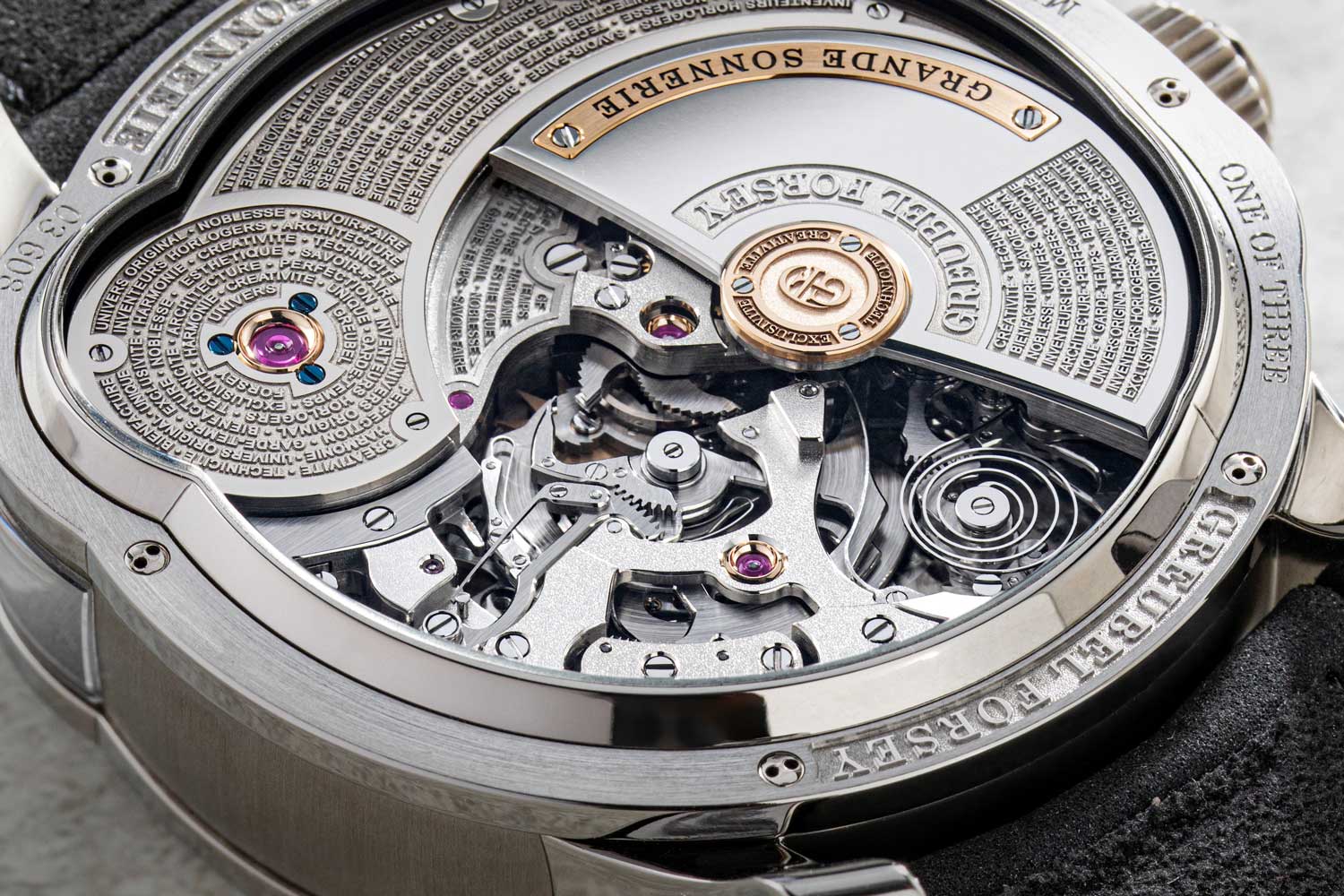
Greubel Forsey Grande Sonnerie (Image: Revolution©)
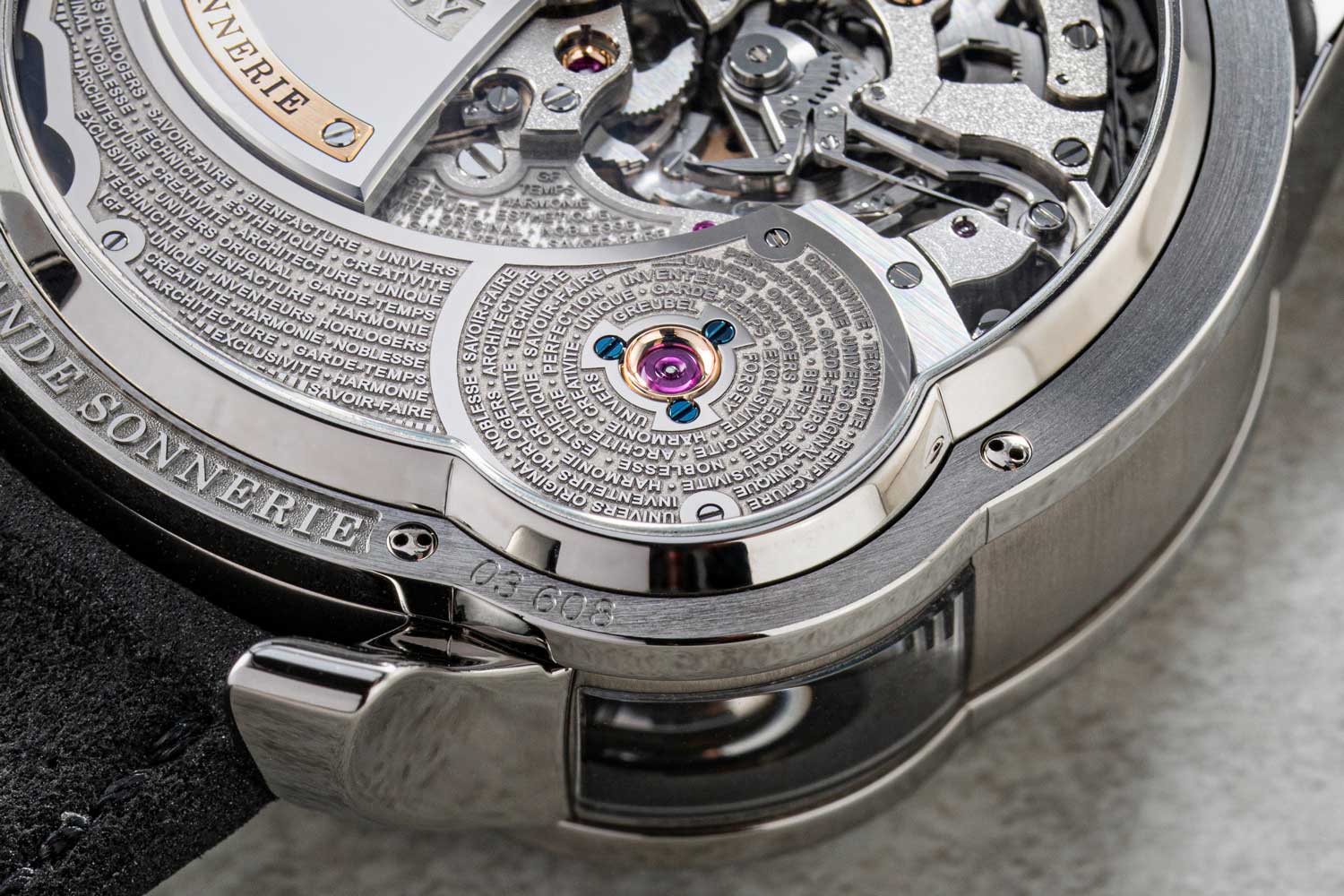
Greubel Forsey Grande Sonnerie (Image: Revolution©)
To eliminate this dead time, the shape of the racks has been revised, and additional toothing has been added on the inner part of the quarter rack. The hour and quarter racks are now directly connected by means of a driving hook articulated on the hour rack that picks up the internal tooth on the quarter rack. This makes it possible to regularize the intervals.
The speed at which the gongs are struck is controlled by a gear train driven by the sonnerie barrel. Along this gear train is a flywheel governor that reduces the unwinding rate of the mainspring by means of providing inertial resistance, thus setting the tempo of the chimes. In contrast to an anchor governor which makes a distinctive buzzing noise, the flywheel governor is almost inaudible. Also visible on the back of the watch is a spiral spring that is charged when the minute repeater is armed via a pusher on the crown.
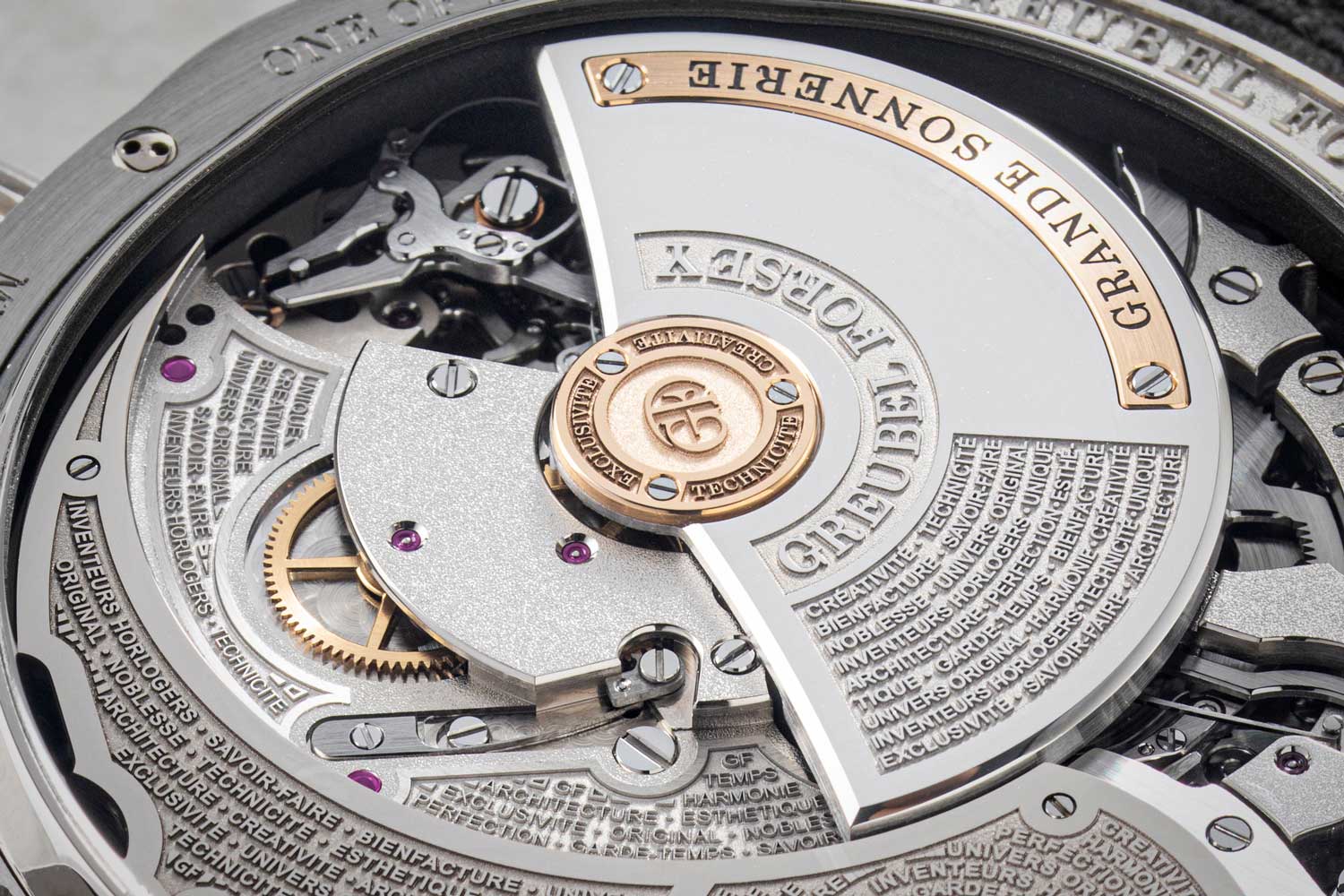
Greubel Forsey Grande Sonnerie (Image: Revolution©)
Everything is further housed in an inner titanium case to amplify the volume of the chimes. And as a result of this, the case could be sealed against moisture, with a depth rating of 30 meters, and yet deliver a clear and strong strike. The high-polish case is also made of titanium, which in addition to making a grand complication practical on the wrist, transmits sound extremely well due to its low density.
Safe and Sound
It is clear that Greubel Forsey made the decision not only to produce an incrementally better sonnerie, but also to enhance practicality. Naturally, as parts count starts to climb in a movement — a whopping 935 components in this case — mechanisms become a lot more fragile with more possible points of failure. As such, just as important as its sheer complexity are the security systems installed to prevent costly damages. To ensure flawless and continuous interaction of all the moving parts in such a highly complex ensemble, an elaborate string of safety and blocking mechanisms have been integrated into the movement.
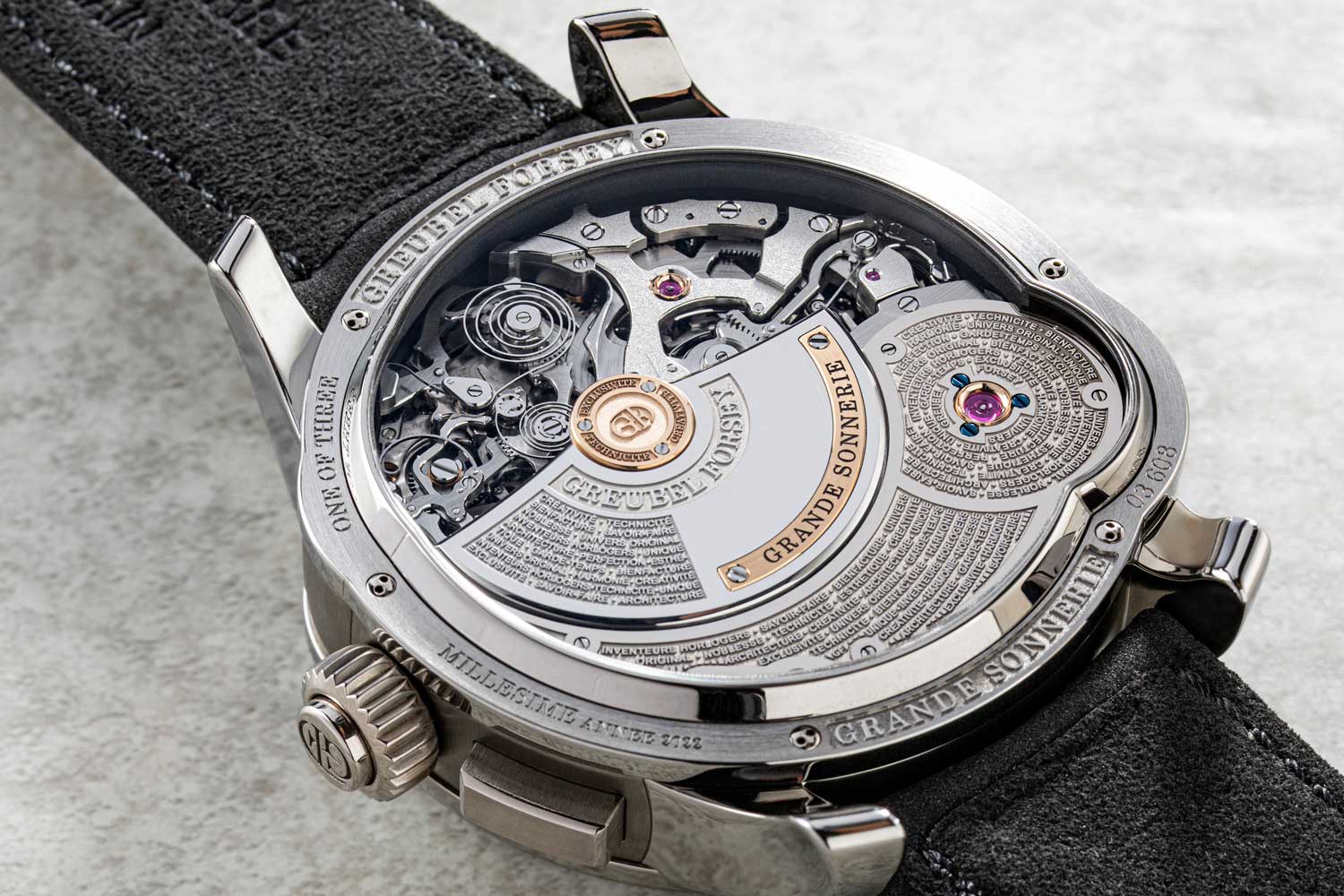
Greubel Forsey Grande Sonnerie (Image: Revolution©)
Final Note
In effect, these mechanisms, along with its remarkably clear dial as well as its water-resistant titanium case, have made the Grande Sonnerie one of the most wholly practical and intuitive on the market. Although it is by no means a small watch, its dimensions of 43.5mm by 16.13mm start to seem reasonable when you consider the immensity of the movement. And in contrast to other chiming watches, its thickness does not feel incongruous to the design of watch.
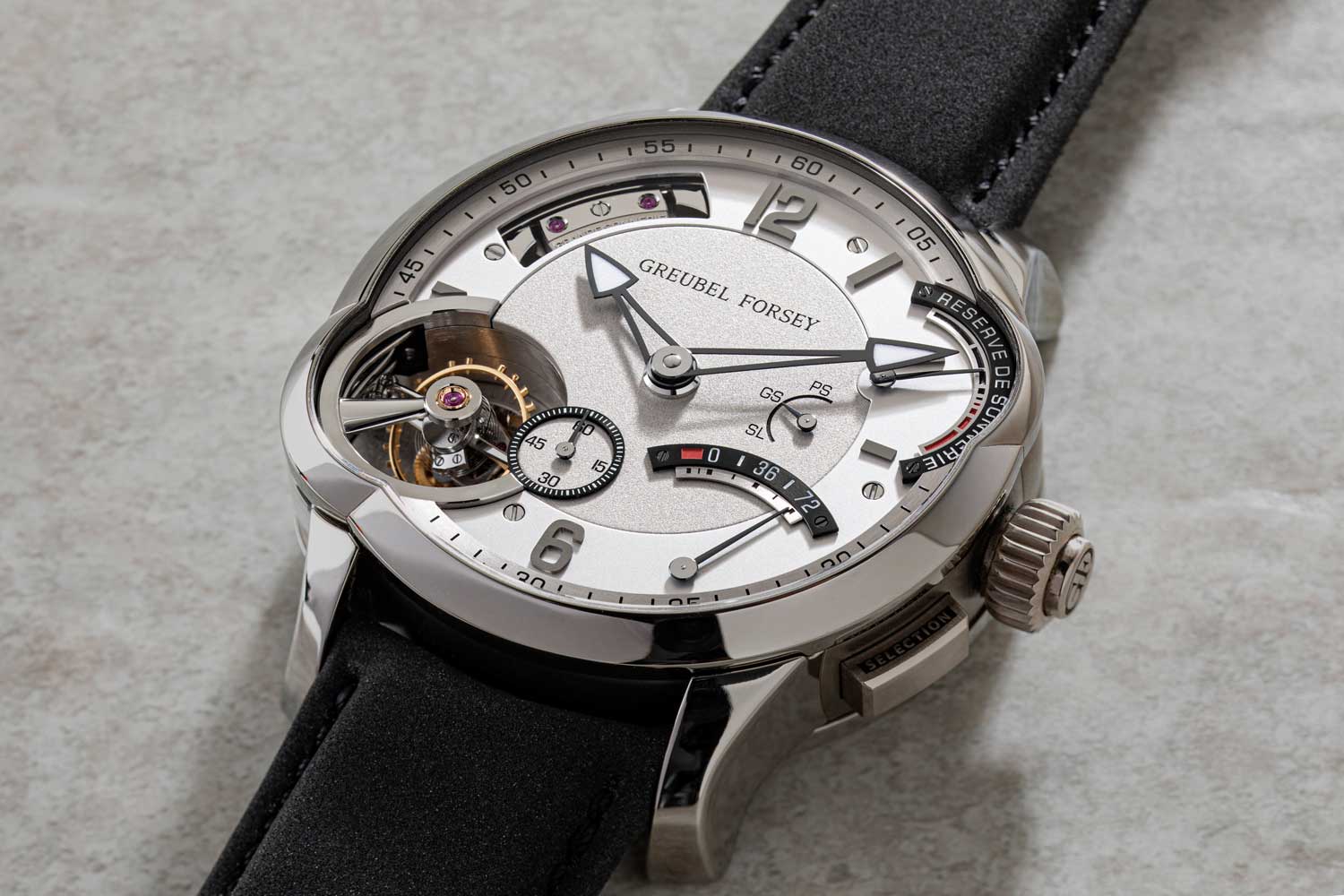
Greubel Forsey Grande Sonnerie (Image: Revolution©)
Due to its labor-intensive nature, production is extremely limited. But for those keen to meet this sonic masterpiece in person, there is one currently available at the new Sincere Haute Horlogerie (SHH) boutique at The Shoppes at Marina Bay Sands in Singapore.










